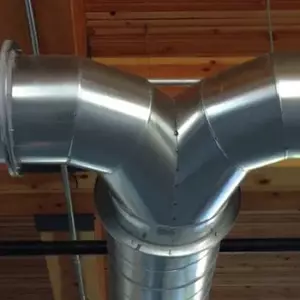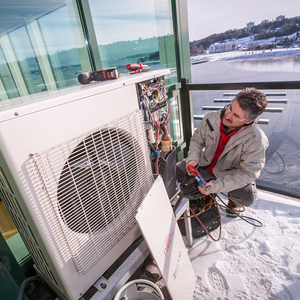
Before this year, probably few people could list even five things they could do to keep themselves from getting a cold or the flu from someone in their house who had it: Stay away. Don’t kiss them. Don’t drink from their glass or eat from their plate. That may be about it. Oh, how much difference a pandemic can make. Now, in addition to those things, we all would say:
- Sneeze and cough into your elbow
- Wash your hands
- Disinfect doorknobs and other often-touched surfaces
- Don’t touch your face
- Wear a mask
- Stay at least six feet away from someone who may be infected
But what else can you do in your home to keep a virus from spreading? The actions above are good mostly for contaminated surfaces and large droplets expelled by sneezing, coughing, or breathing. The smaller droplets, called aerosols, that can float around in the air for hours require more careful thinking. Here’s a start.
Filter out the small particles
If you have or are installing a forced air heating and air conditioning system, upgrade your return air so you can filter out the small particles. ASHRAE recommends a minimum of MERV-14. Going to MERV-16 is even better. This requires enough filter area to prevent air flow problems, though.
Ventilate with outdoor air
If you know or suspect that someone in your home is sick with an infectious disease that can spread through the air, use your ventilation system more. Run the bath fans and the kitchen range hood. If you have a whole-house ventilation system, make sure it’s on and consider increasing the rate, if possible. That will remove some of the potentially contaminated aerosols and dilute the rest.
Use ductless heating and cooling systems
Central heating and air conditioning systems recirculate the air around the house. The movement of that air from supply vents to return vents may transmit virus-laden aerosols across a room, possibly infecting people who aren’t yet sick. The New York Times ran a story last month on how one asymptomatic coronavirus carrier may have spread the disease to nine other people.
One way to avoid that is with ductless heating and cooling systems. That could be radiant heating and cooling or ductless forced air systems, like ductless minisplit heat pumps. The latter still can result in someone getting sick from aerosols because of the air currents within the room. But the spread would generally be confined to a room.
Set up a quarantine room
If someone in the home is sick, have a special quarantine room for them. Ideally, that room will be independently heated and cooled. If it’s conditioned by a central forced-air heating and cooling system, it should have a dedicated return vent and good filtration. Having the room under negative pressure will ensure that contaminated air from the room does not come back into the rest of the house. You may be able to do this with the central heating and cooling system if the room has a dedicated return vent by closing the supply vent partially or completely. If not, a small fan blowing air out of the window can work. Determine if the room is under negative pressure by feeling for air movement with your hand at the undercut or with the door to the room partially open. piece of tissue or nontoxic “smoke” may also indicate which way the air is moving. For negative pressure, the air should be moving into the room.
We live in an interesting time that we even have to consider this, but the good news is that we’ll emerge from the COVID-19 pandemic with a much greater interest in healthy homes.
Allison Bailes of Atlanta, Georgia, is a speaker, writer, building science consultant, and founder of Energy Vanguard. He is also the author of the Energy Vanguard Blog. You can follow him on Twitter at @EnergyVanguard.
Weekly Newsletter
Get building science and energy efficiency advice, plus special offers, in your inbox.















One Comment
Regarding "The movement of that air from supply vents to return vents may transmit virus-laden aerosols across a room, possibly infecting people who aren’t yet sick. The New York Times ran a story last month on how one asymptomatic coronavirus carrier may have spread the disease to nine other people."
It's important to note that the restaurant study specifically does NOT find any evidence that the virus was spread via recirculation. On the other hand, the A/C system in that building was just a bunch of fancoils, not a central recirculating system like you would find in a normal office building.
So we have no evidence, but also little basis to believe that the absence of evidence is evidence of absence.
It's also worth noting that the OA ventilation rate was very low, only 1-2 CFM per person, about 0.7 ACH according to tracer gas experiments. (This is based on a preprint of a followup study, not the NYT article.)
Log in or create an account to post a comment.
Sign up Log in